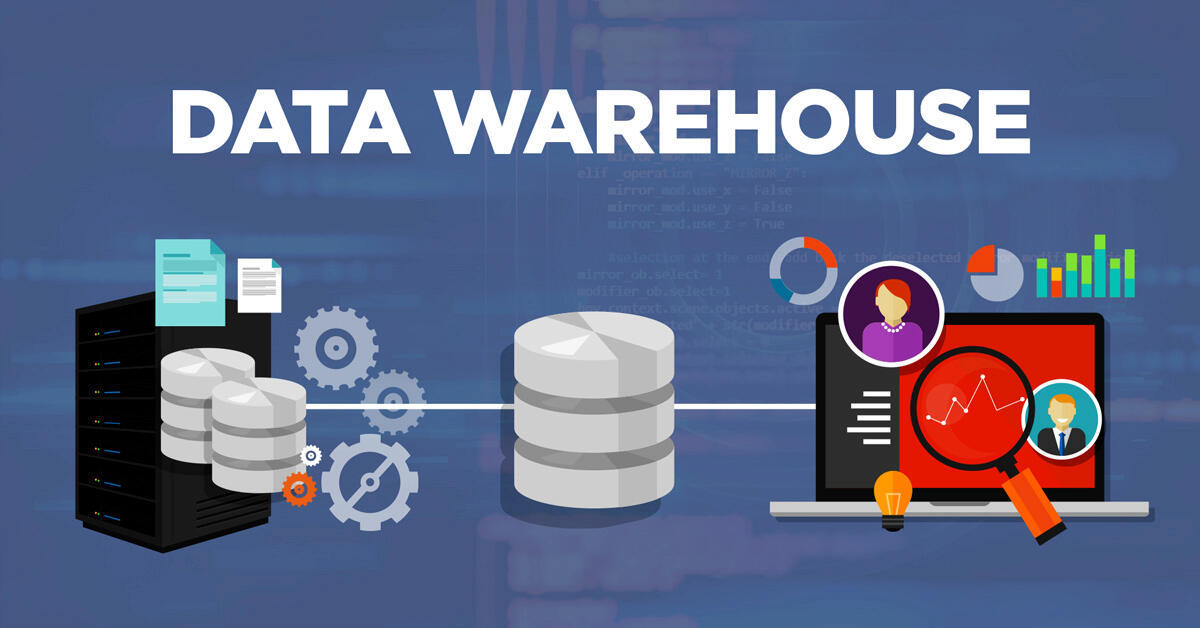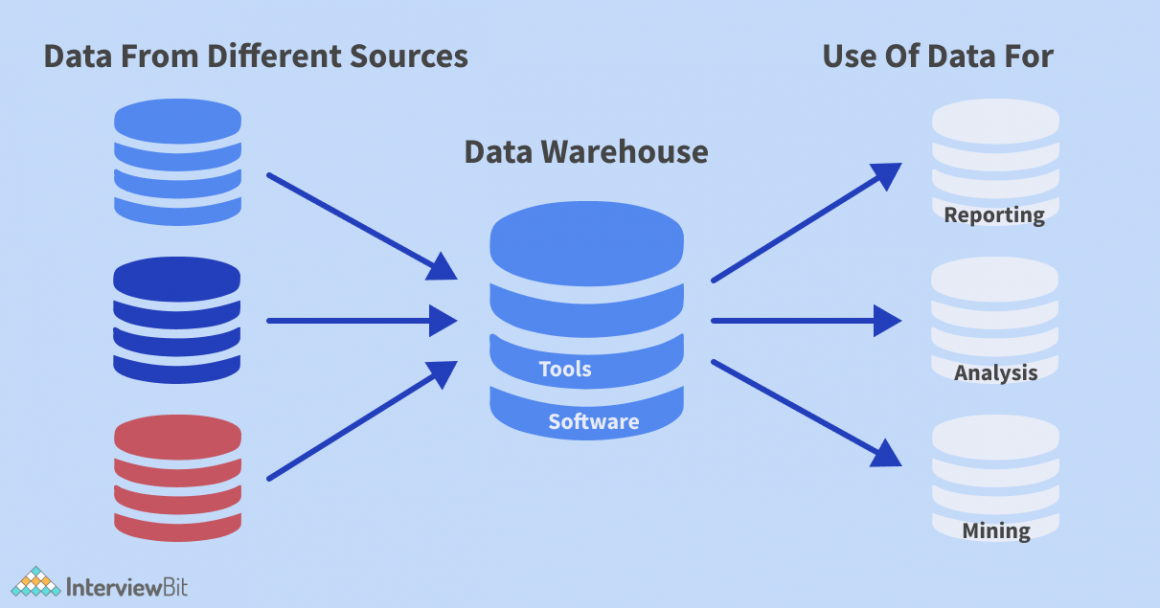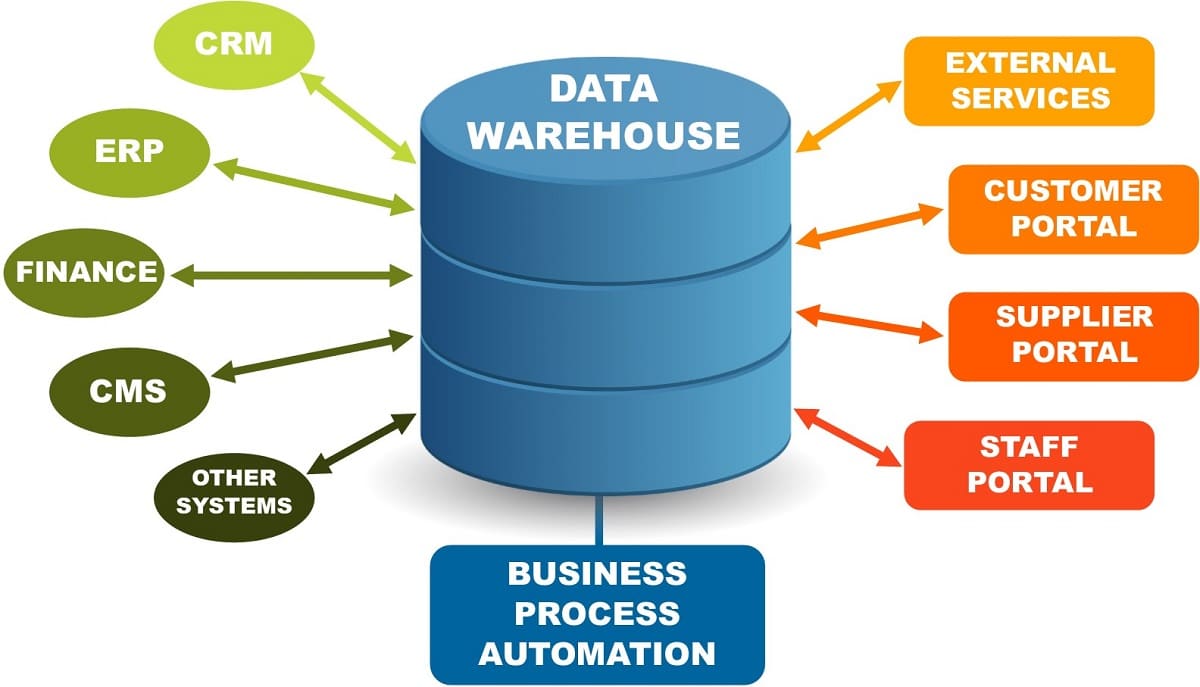Data warehouse software plays a crucial role in modern businesses by efficiently managing and analyzing vast amounts of data. From its architecture to implementation, this software empowers organizations to make data-driven decisions with ease.
Overview of Data Warehouse Software

Data warehouse software is a specialized tool designed to consolidate and analyze large volumes of data from various sources to support decision-making processes within an organization. The primary purpose of data warehouse software is to provide a centralized repository of structured data for reporting, analysis, and data mining.
Key Features of Data Warehouse Software
- ETL (Extract, Transform, Load) Processes: Data warehouse software allows for the extraction, transformation, and loading of data from multiple sources into the warehouse.
- Data Modeling: It provides tools for data modeling and schema design to organize data for efficient querying and analysis.
- Query and Reporting Capabilities: Data warehouse software offers robust querying and reporting features to enable users to extract insights from the data stored in the warehouse.
- Data Integration: It supports the integration of data from various operational systems, databases, and applications into a single, unified view.
Comparison to Traditional Databases
Data warehouse software differs from traditional databases in terms of their design and purpose. While traditional databases are optimized for transaction processing and storing real-time operational data, data warehouse software focuses on analytical processing and storing historical data for decision support. Data warehouse software typically involves a denormalized schema to optimize query performance, whereas traditional databases often use normalized schemas for efficient data storage and updates.
Examples of Popular Data Warehouse Software
- Amazon Redshift: A fully managed data warehouse service provided by Amazon Web Services for analyzing large datasets using SQL queries.
- Snowflake: A cloud-based data warehousing platform that allows users to store and analyze data with scalability and performance.
- Google BigQuery: A serverless, highly scalable, and cost-effective data warehouse designed for big data analytics and machine learning.
Architecture of Data Warehouse Software

Data warehouse software typically consists of various components that work together to enable effective data management and analysis. These components include ETL processes, data storage, and query optimization, each playing a crucial role in the overall architecture of the system.
ETL Processes
ETL (Extract, Transform, Load) processes are essential for data warehouse software as they facilitate the extraction of data from multiple sources, transform it into a consistent format, and load it into the data warehouse. This ensures that the data is clean, organized, and ready for analysis.
Data Storage
Data storage is a fundamental component of data warehouse software architecture. The software utilizes a data warehouse, which is a centralized repository for storing large volumes of structured and unstructured data. This allows for efficient data retrieval and analysis.
Query Optimization
Query optimization is crucial for ensuring fast and efficient data retrieval in a data warehouse. By optimizing queries, data warehouse software can process complex queries quickly, enabling users to extract insights from large datasets in a timely manner.
Data Modeling
Data modeling is a critical aspect of data warehouse software architecture as it involves designing the structure of the data warehouse to support efficient data storage and retrieval. By creating effective data models, organizations can ensure that their data warehouse meets their specific analytical needs.
Scalability and Integration
Data warehouse software must be able to handle large volumes of data and scale to accommodate growing data needs. Additionally, it is essential for data warehouse software to integrate seamlessly with other systems within an organization, such as CRM or ERP systems, to ensure that data can flow freely between different platforms for comprehensive analysis.
Implementation of Data Warehouse Software
Implementing data warehouse software within an organization involves several key steps to ensure a successful transition and utilization of the system. From data migration to overcoming challenges, here are some best practices and insights to consider:
Steps in Implementing Data Warehouse Software
- Define business requirements and goals for the data warehouse software.
- Assess current data sources and quality to determine what needs to be migrated.
- Select a suitable data warehouse software solution based on the organization’s needs.
- Design the data warehouse architecture and data models to support reporting and analysis.
- Develop and test ETL processes for extracting, transforming, and loading data into the warehouse.
- Train staff on using the new data warehouse software effectively.
- Monitor and continuously improve the data warehouse performance and data quality.
Best Practices for Data Migration, Data warehouse software
- Conduct a thorough data audit to identify what data needs to be migrated and cleaned.
- Use data profiling tools to assess data quality and ensure accurate migration.
- Implement a phased approach to data migration to minimize disruptions to operations.
- Regularly backup data during the migration process to prevent data loss.
- Verify data integrity after migration to ensure that all data has been successfully transferred.
Challenges in Data Warehouse Software Implementation and Solutions
- Integration issues with existing systems: Ensure compatibility and conduct thorough testing before full implementation.
- Data quality and consistency: Establish data governance policies and data cleansing processes.
- User adoption and training: Provide comprehensive training and ongoing support to encourage adoption.
- Scalability and performance: Monitor system performance and optimize resources as needed.
Successful Data Warehouse Software Implementation Stories
- Company X increased operational efficiency by 30% after implementing a new data warehouse software solution that streamlined data access and analysis.
- Organization Y improved decision-making processes by 40% with the implementation of a data warehouse software that provided real-time insights and reporting capabilities.
- Business Z achieved a 25% increase in revenue after centralizing data from various sources using a data warehouse software, leading to better strategic planning and forecasting.
Benefits and Challenges of Data Warehouse Software
Data warehouse software offers numerous benefits to organizations, enabling them to make informed decisions and analyze data effectively. However, there are also challenges that organizations may face when implementing and maintaining such software. Let’s delve into the advantages and obstacles associated with data warehouse software.
Benefits of Data Warehouse Software
- Improved Decision-Making: Data warehouse software allows organizations to access and analyze large volumes of data from various sources, enabling better decision-making based on insights and trends.
- Enhanced Data Analysis Capabilities: By centralizing data in a data warehouse, organizations can perform complex analytics, generate reports, and gain valuable business intelligence to drive growth.
- Data Integration: Data warehouse software facilitates the integration of disparate data sources, providing a unified view of information for comprehensive analysis and reporting.
- Scalability: Organizations can scale their data warehouse infrastructure as data volumes grow, ensuring the system can handle increasing data demands effectively.
Challenges of Data Warehouse Software
- Data Quality Issues: Maintaining data quality within a data warehouse can be challenging, as inconsistencies or errors in source data can impact the accuracy of analyses and reports.
- Complex Implementation: Implementing data warehouse software may involve significant time and resources, as well as the need for skilled professionals to design and manage the system effectively.
- Cost Considerations: While data warehouse software offers numerous benefits, the initial implementation costs and ongoing maintenance expenses can be significant for organizations, requiring careful budgeting and resource allocation.
- Data Security and Privacy Concerns: Safeguarding sensitive data within a data warehouse is crucial, and organizations must implement robust security measures to protect against potential breaches or unauthorized access.
Cost-Benefit Analysis
It is essential for organizations to conduct a thorough cost-benefit analysis before implementing data warehouse software, weighing the expenses against the potential advantages in terms of improved decision-making, data analysis, and operational efficiency.
Competitive Advantage
- Data-driven Decision-Making: By leveraging data warehouse software effectively, organizations can gain a competitive edge by making data-driven decisions, identifying opportunities, and responding swiftly to market changes.
- Business Agility: Data warehouse software enables organizations to adapt quickly to evolving business environments, innovate, and stay ahead of competitors by leveraging data insights for strategic planning and execution.
Final Conclusion

In conclusion, data warehouse software offers a myriad of benefits for organizations looking to leverage their data effectively. By overcoming challenges and embracing best practices, businesses can harness the power of data to stay competitive in today’s market.
